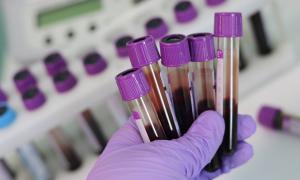More than 20 years with HIV under control without treatment: what we know about exceptional elite controllers

Less viral reservoir, a strong HIV-specific response, and defective viruses are some of the key factors that allow these individuals to control HIV, representing a great model of functional cure for the scientific community
If untreated with antiviral therapy, HIV infection leads to the destruction of the immune system, resulting in severe immunodeficiency, which is ultimately fatal in the vast majority of cases. However, less than 1% of those who acquire the virus can effectively control it without developing the disease; these individuals are known as elite controllers. Some of these individuals show an exceptional ability to maintain undetectable levels of the virus for more than 20 years without treatment, and they are referred to as exceptional elite controllers. Javier Martínez-Picado, ICREA researcher at IrsiCaixa, reflects: "What enables them to control the virus so effectively? How can we learn from these cases to develop therapeutic strategies specifically aimed at curing HIV?"
To address these questions, the team from the Retrovirology and Clinical Studies Group (GREC) at IrsiCaixa, along with the National Institute of Allergy and Infectious Diseases of the National Institutes of Health, compiled international studies on these individuals, publishing their findings in the journal Med by Cell Press. They have been able to affirm that a confluence of genetic, virological, and immunological factors contributes to this ability to control HIV, offering a promising model for the functional management of the infection.
Minimal viral reservoir and defective viruses
HIV infection can be treated but not cured generally due to the existence of viral reservoirs that persist despite antiviral treatment. This viral reservoir, which includes cells with latent HIV capable of reactivating if treatment is interrupted, has been extensively studied among exceptional elite controllers. "These individuals have 3 to 10 times fewer reservoirs than those receiving antiretroviral treatment. This level is remarkably reduced even in lymphatic tissues, where reservoir concentrations are typically higher," comments Maria Salgado, a researcher at IrsiCaixa.
Despite significant efforts, the scientific community has not succeeded in isolating and studying replicative viruses in these patients. However, using high-precision techniques, they have been able to sequence the virus and observed that its genome contains modifications that limit its ability to multiply normally, leading to low viral replication.
Good immune response specific to HIV
Studies indicate that exceptional elite controllers have at least one protective genetic factor associated with the immune response to HIV. Although these factors are also present in individuals who progress in the infection, it seems that in these individuals, the HIV-specific T cell immune response plays a crucial role. According to Martínez-Picado, "In the absence of antiretroviral treatment, the virus has a considerable advantage. However, having a less active virus is only part of the balance; a robust immune response, along with other factors like immunogenetics and the preservation of immune cells, tips the scale in favor of the host."
The initial impact of infection and future prospects
Although current antiretroviral treatment works excellently and is the best option for people with HIV, finding a cure remains a top priority for the scientific community. "We are exploring possible strategies to allow people with HIV to live without the need for chronic treatment. Having a successful model, like exceptional elite controllers, is crucial for future research. Until then, although more time is needed, all people diagnosed with HIV should follow treatment rigorously, as this allows for a long and healthy life," emphasizes Martínez-Picado.
Understanding the mechanisms of exceptional elite controllers represents a significant advancement. "These profiles show that the balance between the host and the virus is established early in the infection. Quickly detecting the infection and acting promptly, whether through current treatments or future interventions, is essential to tip the balance in favor of the host," concludes Maria Salgado, researcher at IrsiCaixa.